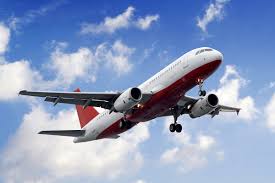Sky-High Airfares to Kashmir: A Barrier to Tourism and Local Connectivity
By: Javid Amin
In recent times, airfares to Kashmir have reached unprecedented levels, surpassing even those of some international flights. This surge in ticket prices has turned Kashmir into a luxury destination, deterring not only tourists but also locals who need to travel. The steep airfares have sparked outrage among tourism operators, who are now demanding government intervention to curb what they describe as arbitrary pricing practices by airlines.
The Financial Barrier to Kashmir’s Beauty
Imagine planning a trip to Kashmir, yearning for a soothing shikara ride on the serene Dal Lake or a tranquil escape to its mesmerizing pastures. The thought alone is enticing. However, the reality of exorbitant airfares could quickly shatter those dreams. Currently, the cost of flying to Kashmir has become prohibitively expensive, with prices outstripping even those of several international destinations.
The Price Hike: A Comparative Overview
Kashmir sees approximately 100 flights daily. Traditionally, the average airfare from Delhi to Srinagar has ranged between Rs 4,000 and Rs 5,000. Recently, these fares have surged dramatically, now ranging between Rs 8,000 and Rs 15,000. This steep increase isn’t confined to flights from Delhi; airfares from other cities across India have seen a similar spike.
Impact on Tourism and Locals
Tourism operators in Kashmir are vocal about the adverse effects of these skyrocketing airfares. They argue that such high costs are making Kashmir an unaffordable destination for many tourists. This, in turn, affects the local economy, which relies heavily on tourism.
Manzoor Pakhtoon, a tour and travel agent, highlighted the issue: “During the peak season, airfares go high, and many tourists change their plans because of this. When they find cheaper tickets to nearby South Asian countries, it definitely affects our trade.”
Limited Connectivity and Its Challenges
Kashmir’s connectivity is limited. It is linked to the rest of the world primarily by road and air, with no railway network to bolster its accessibility. The road journey to Kashmir is arduous, involving hilly terrains and often poorly maintained sections, making air travel the preferred mode of transportation for tourists. However, the escalating airfares are raising concerns among potential visitors.
Voices from the Ground
Tourists from various parts of India have shared their experiences, reflecting the broader sentiment of frustration. Alok and his wife from Indore recounted their ordeal: “One month before we booked, the fare was Rs 6,000. Two days later, it was Rs 16,000. Such huge fluctuations are demotivating.”
Ankit Tripathi from Lucknow echoed similar concerns: “If we have to connect Jammu and Kashmir to the rest of the country and boost tourism, we need to improve connectivity. Srinagar doesn’t have a railway. We can only come by road or air, and the airfares have gone high. The fare should be closer to rail fare so that more people can come.”
Governmental and Institutional Response
The issue of fluctuating and often exorbitant airfares has caught the attention of the Parliamentary Standing Committee on Transport, Tourism, and Culture. The committee recently tabled a report addressing the government’s actions on recommendations regarding airfares.
The Committee’s Findings
The report highlighted numerous instances of abnormal fare increases, especially during peak travel times such as festivals or holidays. It concluded that self-regulation by airlines has not been effective in controlling these surges.
The panel recommended developing a mechanism empowering the Directorate General of Civil Aviation (DGCA) to regulate air tariffs. Currently, airfares are neither established nor regulated by the government. The committee strongly urged the Ministry to formulate a mechanism ensuring compliance with Rule 13(1) of the Aircraft Rules, 1937, to control fare surges.
The Path Forward: Balancing Growth and Accessibility
The rising airfares to Kashmir present a complex challenge. On one hand, there is the need to ensure that tourism remains a viable and thriving sector in Kashmir. On the other hand, there’s the imperative to make travel affordable and accessible to both tourists and locals.
Potential Solutions
To address these issues, several measures can be considered:
- Government Intervention: The government can take a more active role in regulating airfares, especially during peak seasons. By setting upper limits on fares, the government can help maintain affordability.
- Increased Competition: Encouraging more airlines to operate flights to and from Kashmir can increase competition, potentially driving down prices.
- Alternative Transportation: Improving road infrastructure and exploring the possibility of introducing rail connectivity to Kashmir can provide travelers with more options, reducing dependence on air travel.
- Subsidies and Incentives: Providing subsidies or incentives for airlines to keep fares low during peak tourist seasons can help manage the cost burden on travelers.
- Transparent Pricing: Ensuring that airlines adopt transparent pricing mechanisms and avoid arbitrary fare hikes can build trust among consumers.
The Role of Technology
Leveraging technology can also play a significant role in managing travel costs. Dynamic pricing algorithms, while often a cause of fluctuating prices, can be optimized to ensure fairness. Additionally, platforms that aggregate and compare fares across different airlines can help travelers find the best deals.
Bottom-Line: Navigating the Future of Kashmir’s Tourism
Kashmir, with its unparalleled beauty and rich cultural heritage, deserves to be accessible to all who wish to experience it. The current trend of soaring airfares is a significant barrier that needs immediate attention. By implementing a combination of regulatory measures, improving infrastructure, and leveraging technology, it is possible to strike a balance between maintaining the economic viability of air travel and ensuring it remains within reach for both tourists and locals.
Final Thoughts
Tourism is the lifeblood of Kashmir’s economy. Ensuring its growth and sustainability requires a concerted effort from the government, airlines, and the tourism industry. By addressing the issue of high airfares, we can open the doors to Kashmir for more visitors, thereby boosting the local economy and enriching the cultural fabric of this beautiful region. The journey to making Kashmir an affordable destination is challenging but essential for its future prosperity.



